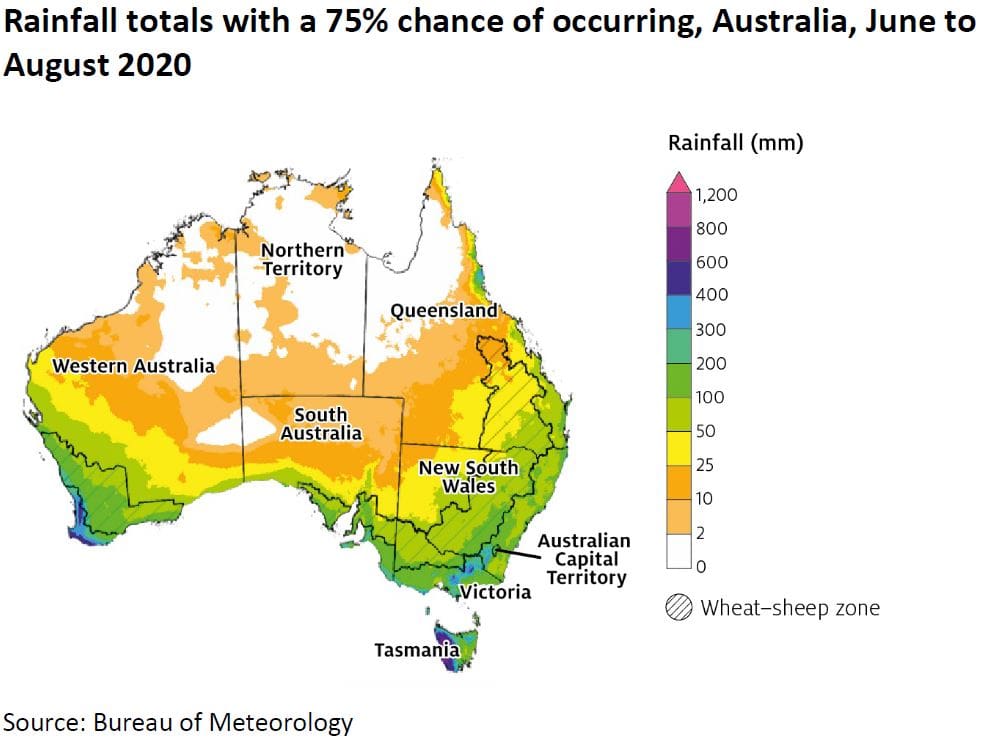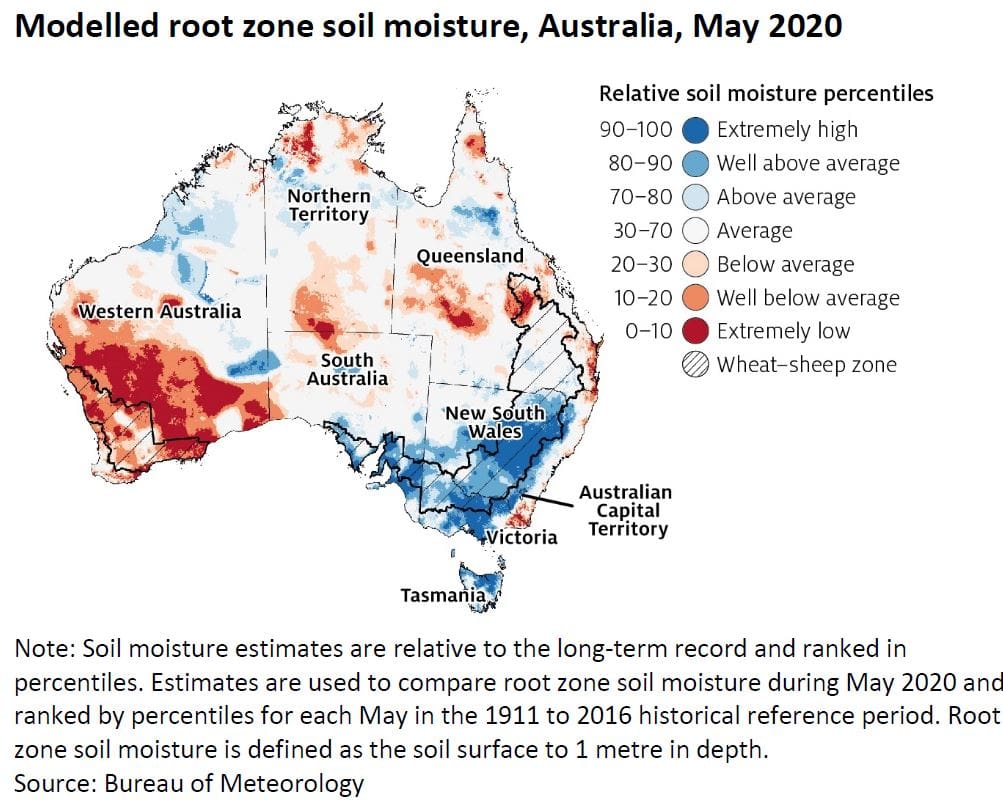FAVOURABLE climate conditions during autumn have improved prospects for the winter cropping season, prompting ABARES to predict Australian wheat production will increase by 76 per cent in 2020–21 to 26.7 million tonnes (Mt).
In its ‘June Agriculture Commodities Report’, ABARES said the improved seasonal conditions had encouraged farmers to increase the area planted to winter crops nationally by 23pc, with increases of over 90pc in New South Wales and Queensland.
These strong increases reflect the low base of crop area after several years of drought, especially in the eastern growing areas.
The area planted to wheat is forecast to increase following an excellent start to the winter cropping season in New South Wales, Victoria and parts of South Australia. Conditions in Queensland and Western Australia have been less favourable.
Winter rainfall potential
ABARES said a positive outlook for winter rainfall was contributing to forecasts of better yields in 2020–21 compared to the drought-affected 2019–20 crop.
Models surveyed by the Bureau of Meteorology suggest the possibility of a negative Indian Ocean Dipole (IOD) developing in the Indian Ocean from mid-winter, raising the potential to bring above average winter to spring rainfall to southern Australia.
Some model outlooks also suggest a La Niña-like state in the tropical Pacific Ocean is possible later in the Southern Hemisphere spring, a development normally associated with higher than average rainfall during winter, spring and early summer over much of Australia.
The bureau’s forecast indicates a 75pc chance of receiving between 50 and 100 millimetres of rainfall in most Australian cropping regions between June and August 2020.
The forecast indicates a 75pc chance of between 100 and 200 millimetres in most cropping regions in Western Australia and southern cropping regions in New South Wales, Victoria and South Australia. ABARES suggests these rainfall totals are likely to be enough to sustain crops through to spring in regions where crops were in a good position at the start of winter.
The forecast indicates that northern and western cropping regions in Queensland have a 75pc chance of receiving rainfall of between 10 and 50 millimetres. In areas with low soil moisture at the start of winter, these expected low three-month rainfall totals are unlikely to be sufficient to sustain crop production.

Soil moisture top up
ABARES said autumn rainfall had led to improved soil moisture across south-eastern Australia following a summer of mixed rainfall and well above average temperatures. Root zone soil moisture was above average across much of Australia during March and variable in April and May.
In May 2020 soil moisture in cropping regions was below average across Western Australia and northern Queensland, and average across the remainder of Queensland. In contrast, soil moisture was above average to well above average across New South Wales, Victoria and South Australia. Lower layer soil moisture in Queensland has been average to above average, but autumn rainfall totals have been low.

World production potential
ABARES said global crop production conditions were generally favourable in major crop-producing countries, despite dryness across parts of the European Union, Brazil, Argentina, Ukraine and some equatorial regions.
In the southern hemisphere, conditions for wheat sowing are generally favourable for Australia and mixed for Argentina.
In the northern hemisphere, conditions are mixed for wheat crop development in the European Union and Ukraine, and generally favourable for crop development and sowing in the United States, Canada and China.
Conditions are favourable in the Russian Federation with the exception of southern regions, where winter wheat yields have been affected by drought conditions.
Global climate outlook
ABARES said the global climate outlook indicated that average to above average rainfall was more likely between June and August 2020 for most of the world’s major grain- and oilseed-producing regions.
If realised, this is likely to benefit spring wheat and canola (rapeseed), cotton, rice, corn, grain sorghum, soybean, sunflower and millet production in the northern hemisphere, and winter wheat and canola (rapeseed) production in most southern hemisphere growing regions.
Source: ABARES

HAVE YOUR SAY